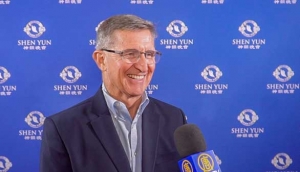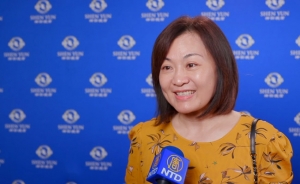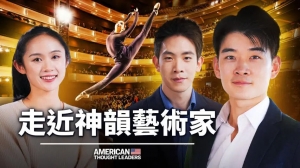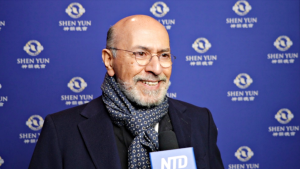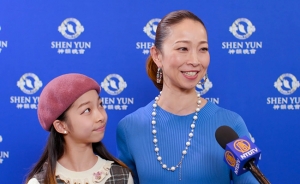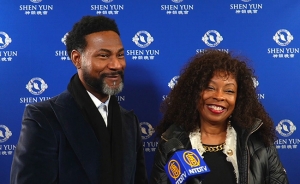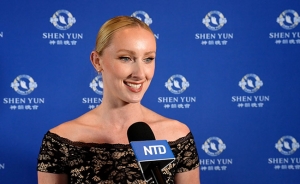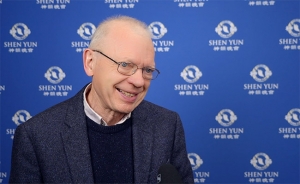
NEWSWEEK: 'I Was a Former Shen Yun Dancer. I Was Proud to Be a Part of It'
BY MINGYE LIU
Reading The New York Times article about my former employer Shen Yun Performing Arts, I was shocked.
The paper interviewed a group of former artists with a negative perspective, but where were the many voices of performers like me who loved their time with the company?
I spent nearly a decade with Shen Yun, performing over 800 shows. I eventually left to pursue a career in dance education, but during my time with the company, I grew both professionally and as an individual.
From the start, Shen Yun set its sights on becoming a top-tier performing arts organization. In my time as a Shen Yun dancer, from 2006 to 2015, my artistic standards evolved along with the company and the highly motivated individuals I worked with.
As a child in Southern California, I searched for a connection with my cultural heritage and seriously trained in Chinese martial arts. But as I entered college, I was facing the prospects of a more conventional career, one that neither motivated nor inspired me. It was then that a family friend told me about a new performing arts company being formed in New York with a mission of presenting Chinese culture on stage.
I began daydreaming about training with like-minded individuals, honing my skills, and showcasing all of that on stage to thousands of audience members. The boyish side of me could feel the thrill of such an adventure.
A few weeks later, I was on a plane for JFK. One day and an audition later, at the age of 21, I joined the ranks of the first Shen Yun company, preparing for its first world tour scheduled for the winter of 2006.

From upper management to the artists and even the cleaning staff, I saw every layer of the organization worked with a sense of mission and pride in building Shen Yun into a world-class company that would bring more beauty to the world.
As someone who took ownership of this vision, I felt proud to be a part of it. Each year, we built upon the previous year's success to aim a little higher. From the choreography to daily life, all parts of the organization worked hard to make it happen.
Things were tough at first, perhaps like the challenges faced by many startup companies dealing with financial difficulties and the workload of the company's teething phase. During our humble beginnings, we only had one large studio and one temporary studio that doubled as a cafeteria.
Every day, when classes were conducted in the temporary studio, we had to first move all the cafeteria tables to the sides of the room in order to free up the bulk of the space for dance. Some early dress rehearsals were even held on a makeshift stage outside in the open summer air. We were figuring things out on the go. Sure, we worked hard, but we did it shoulder-to-shoulder to realize our shared vision and dream.
Our routines were not that different from those of dancers in ballet companies. A typical day would start with a morning jog and some exercises. We'd have an hour and a half of dance class, followed by rehearsals. In between, we might have tumbling training a couple of days a week, optional self-practice times, naps, meals, and even group meditation. I would try to sneak in a few extra training sessions to work on my flexibility or technique with a few of the guys. Those moments of training and laughing with my brothers are some of my fondest memories.
With this level of dedication, Shen Yun quickly became a household name. We were able to present classical Chinese dance to a worldwide audience on a scale never seen before. We traveled the world multiple times over, frequenting stages reserved for the world's most prestigious artists.
Standing on stage just before the curtain opened, I felt so incredibly lucky to be there, performing for people clad in evening gowns and tuxedos who came to watch us dance. Hearing their thunderous applause and seeing their eyes while giving us a standing ovation made it so worthwhile.
Most of our dance pieces told traditional stories or had ethnic, folk, and even comedic themes, but we also covered serious topics, like the persecution of Falun Gong practitioners by the Chinese Communist Party (CCP).
These dances brought to life the ongoing human rights atrocities faced by millions of people simply for their faith. This story is close to my heart, as my aunt and uncle were forced to abandon their home, flee CCP agents, and live a homeless life for ten years because they practiced Falun Gong. On stage, I was speaking up for them. And in a company founded by Falun Gong practitioners, we all were.
I want to make it very clear that, in my experience, starting from day one—and I was there—our management took very good care of us.
Take the issue of injuries—just like any high-level athletic endeavor, Shen Yun dancers do deal with injuries, myself included. When this happens, dancers are switched out of their roles and go get rest, medical treatment, and surgery if needed. I took weeks off to rest for various injuries and was never forced, required, or encouraged to do anything until I was ready to do so.
In 2008, going a little too hard in my own self-practice session, I strained my left achilles tendon. For the next three months, I was able to obtain the necessary care, while I took it easy and sat in on classes and rehearsals. I then gradually eased back into training and performing safe dance movements within my range. It was not until six months after my injury that I was finally performing at full capacity.
During those times, I received generous doses of empathy from fellow dancers who wished me a quick recovery—just like in any healthy dance company or team. No one was gunning for my job—we were all rooting for each other. That is the culture of Shen Yun.
Life at an elite performing arts company isn't for everyone. Some people may not meet the standard and lose their jobs. Others leave wishing to pursue a different career or focus on starting a family.
In my later years with the company, I started developing an interest in dance pedagogy. Eventually, after nine years, I left in 2015 to pursue a career in dance education.
I saw a few good friends leave the company after talking about their future plans and, as far as I'm aware, no one stood in their way. Management repeatedly emphasized to us that being a part of Shen Yun is our own choice.
Even the best companies in the world have unhappy employees who leave on bad terms. Just like reading reviews on the internet—those with negative sentiments tend to be louder than those who are content and happy.
But one wonders: Where are the interviews with all the happy former Shen Yun employees that I know? For Shen Yun to grow from one company to eight in less than two decades requires not only a large number of high-level artists but also a high retention rate.
This begs the question: If performers are so disgruntled, why are so many top artists joining and staying with Shen Yun?
Mingye Liu is a former professional Shen Yun dancer. He lives with his wife and son in Middletown, NY.
Original article published on Sep 04, 2024



